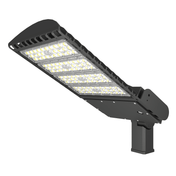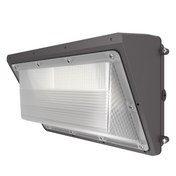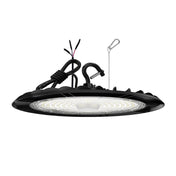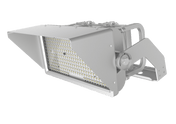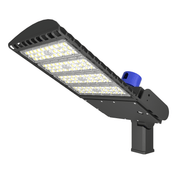Commercial and industrial facilities—from warehouses and factories to retail superstores—are notorious for high energy consumption, with lighting often accounting for 20–30% of total electricity bills. In recent years, LED high bay lights have emerged as a game-changer, slashing energy costs by 50–70% compared to traditional options like metal halides or fluorescent tubes. But what’s the science behind this dramatic efficiency? This blog dives into the technical mechanisms that make LED high bay lights so energy-efficient, from semiconductor physics to smart design, and explains how these innovations translate to real-world savings.
1. The Basics: How LED Technology Differs from Traditional Lighting
To understand LED energy savings, we first need to contrast how LEDs produce light with older technologies. The core difference lies in light generation efficiency—how much of the energy input is converted into visible light versus wasted as heat.
1.1 Traditional Lighting: Energy Loss as Heat
Traditional lighting sources are inherently inefficient. Metal halide lamps, for example, work by heating a gas-filled arc tube to extremely high temperatures (up to 2,000°C), causing the gas to emit light. This process wastes 60–80% of energy as heat. Fluorescent tubes are slightly better but still rely on heating a filament to excite mercury vapor, resulting in 50–70% energy loss as heat. In high-bay settings, this excess heat not only drives up lighting costs but also increases air conditioning expenses, creating a double financial burden.
1.2 LEDs: Cold Light Emission via Electroluminescence
LEDs (Light-Emitting Diodes) use a completely different mechanism called electroluminescence. They consist of a semiconductor chip doped with materials that create a “p-n junction.” When an electric current passes through the chip, electrons and electron holes recombine in the junction, releasing energy in the form of photons (light). This process occurs at near-room temperatures, wasting only 10–30% of energy as heat. For high bay lights—where fixtures operate for 8–16 hours daily—this efficiency gap translates to massive long-term savings.
2. 5 Key Scientific Factors Driving LED High Bay Energy Savings
LED high bay lights don’t just benefit from basic LED efficiency—they incorporate advanced designs and technologies that amplify energy savings. Let’s break down the science behind each factor:
2.1 High Luminous Efficacy: More Light per Watt
Luminous efficacy (measured in lumens per watt, lm/W) quantifies how much visible light a fixture produces per unit of energy. Modern LED high bay lights boast 130–180 lm/W, while metal halides typically offer only 60–90 lm/W, and fluorescent tubes 70–100 lm/W. This means an LED high bay can produce the same brightness as a traditional fixture with half the wattage. For example, a 100W LED high bay delivers the same light output as a 250W metal halide—cutting energy use by 60% right out of the box.
The science here lies in LED chip design. Manufacturers use gallium nitride (GaN) semiconductors, which have a higher bandgap energy than older materials, enabling them to emit more photons per electron. Additionally, advanced phosphor coatings (e.g., quantum dot phosphors) convert blue LED light into a broader spectrum of visible light without significant energy loss, further boosting efficacy.
2.2 Directional Light Output: No Wasted Illumination
Traditional lighting sources like metal halides emit light in all directions (360°), but high bay applications only require downward illumination. To redirect this wasted light, traditional fixtures need reflectors, which absorb 10–20% of the light in the process. LEDs, by contrast, emit light directionally (120°–180°), eliminating the need for inefficient reflectors. This “light where you need it” design ensures nearly all the light produced reaches the target area—no more energy wasted on illuminating ceilings or walls.
For high bay spaces with 15–40 ft ceilings, this directional output is critical. LED high bays use precision optics (e.g., TIR lenses) to focus light into narrow or wide beams, ensuring uniform coverage without over-illuminating unused areas. A warehouse using LED high bays, for instance, can reduce wattage per square foot from 1.5W (metal halide) to 0.7W (LED) while maintaining the same light level (50–100 lux).
2.3 Efficient Heat Management: Sustained Performance
While LEDs produce less heat than traditional lights, excess heat still degrades their performance over time, reducing efficacy and lifespan. LED high bay lights address this with advanced thermal management systems, which preserve efficiency and ensure consistent energy savings for years.
Common heat dissipation technologies include: aluminum heat sinks (which conduct heat away from the chip via thermal conductivity), heat pipes (which transfer heat using phase change), and radial fins (which increase surface area for heat radiation). For example, a UFO-style LED high bay uses a dome-shaped finned heat sink that spreads heat 360°, keeping the chip temperature below 85°C—critical for maintaining 90% of initial efficacy after 50,000 hours of use.
2.4 Smart Control Integration: Energy on Demand
LEDs are inherently compatible with smart controls, allowing users to adjust light output based on occupancy, daylight, or time of day—something traditional lights struggle with. This demand-response lighting adds another layer of energy savings, often reducing usage by an additional 15–30%.
Key smart features include: motion sensors (which turn lights off in unoccupied areas), daylight harvesting (which dims lights when natural light is abundant), and DALI/0–10V dimming (which allows precise brightness adjustment). A distribution center, for example, might use motion sensors in rarely used aisles, cutting lighting costs for those areas by 80%. Similarly, a retail store can dim lights during off-peak hours without sacrificing visibility.
2.5 Long Lifespan: Reduced Replacement Cycles
While lifespan doesn’t directly affect energy use per hour, it impacts total energy costs over time. LED high bay lights last 50,000–100,000 hours, compared to 10,000–20,000 hours for metal halides and 20,000–30,000 hours for fluorescent tubes. This means LEDs need to be replaced 3–5 times less frequently.
The science behind this longevity is rooted in LED durability. Unlike traditional lamps, LEDs have no filaments or glass bulbs to break, and their solid-state design resists vibration and temperature fluctuations. Fewer replacements mean less energy spent on manufacturing, shipping, and installing new fixtures—contributing to life-cycle energy savings that go beyond just operational use.
3. Real-World Energy Savings: Case Studies
Numbers tell the story best. Here are two case studies that demonstrate how LED high bay energy savings translate to tangible results:
3.1 Warehouse Lighting Retrofit
A 100,000 sq. ft. logistics warehouse in Chicago was using 200 metal halide fixtures (250W each), consuming 50,000W hourly. The warehouse operated 12 hours daily, 365 days a year, with an electricity rate of $0.15/kWh. Annual lighting costs were: (50,000W / 1000) * 12 * 365 * $0.15 = $32,850.
After retrofitting with 150 LED high bay lights (100W each), total hourly consumption dropped to 15,000W. New annual costs: (15,000W / 1000) * 12 * 365 * $0.15 = $9,855. This resulted in 69.9% energy savings ($22,995 per year) and a payback period of just 14 months.
3.2 Manufacturing Plant Upgrade
A 50,000 sq. ft. automotive parts factory in Detroit used 150 fluorescent high bay tubes (80W each), consuming 12,000W hourly. Operating 16 hours daily, annual costs were: (12,000 / 1000) * 16 * 365 * $0.17 = $11,856.
Upgrading to 100 LED high bays (50W each) reduced hourly consumption to 5,000W. New annual costs: (5,000 / 1000) * 16 * 365 * $0.17 = $4,940. Savings: 58.4% ($6,916 per year) with a payback period of 18 months.
4. How to Maximize LED High Bay Energy Savings: Buying Tips
To unlock the full energy-saving potential of LED high bay lights, keep these scientific principles in mind when purchasing:
-
Prioritize Luminous Efficacy: Choose fixtures with ≥150 lm/W for maximum efficiency. Avoid low-quality LEDs with <130 lm/W, as they’ll waste energy.
-
Opt for Smart Controls: Invest in fixtures compatible with motion sensors or daylight harvesting—even a basic dimming system can add 15% savings.
-
Check Thermal Design: Look for fixtures with aluminum heat sinks or heat pipes. A well-cooled LED will maintain efficacy longer, ensuring consistent savings.
-
Select the Right Beam Angle: Match the beam angle to your space (e.g., 60° for open areas, 30° for narrow aisles) to avoid over-illumination.
-
Choose Quality Drivers: LED drivers convert AC to DC power—high-efficiency drivers (≥90% efficiency) minimize energy loss during conversion.
5. Conclusion
The energy savings of
LED high bay lights aren’t just marketing hype—they’re rooted in fundamental science: electroluminescence reduces heat waste, directional output eliminates unused light, thermal management preserves efficiency, smart controls optimize usage, and long lifespans cut replacement-related energy costs. For commercial and industrial facilities, these technologies translate to thousands of dollars in annual savings, faster payback periods, and a smaller carbon footprint.
As LED technology continues to advance—with next-gen chips promising 200+ lm/W—energy savings will only grow. By understanding the science behind LED high bays, you can make informed decisions that not only reduce costs but also create brighter, more sustainable workspaces.




